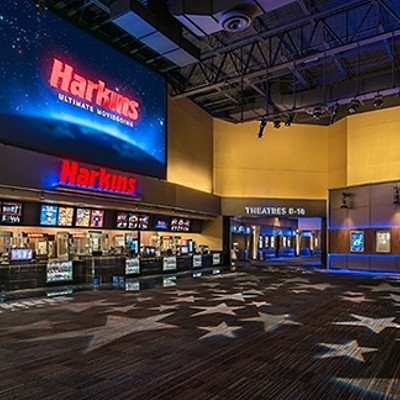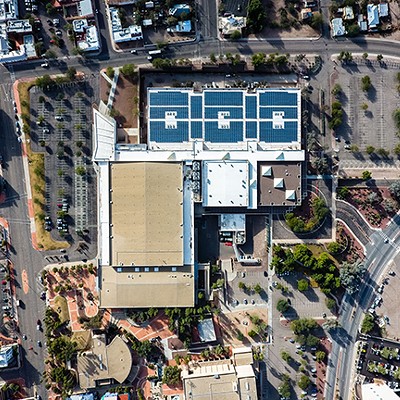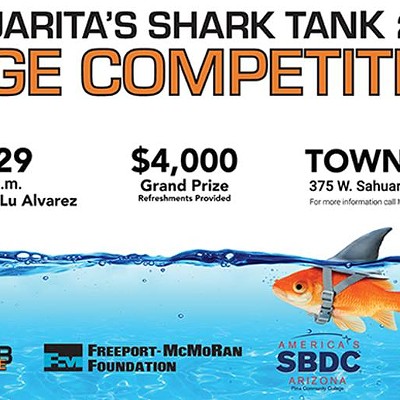In 1987, Leland and Josephine Case sold 17 acres of desert land near 22nd Street and Harrison Road to the city of Tucson. The city acquired another 39 adjacent acres containing a few homes in anticipation of creating a district park. But after spending $1.9 million for the property, the city had no money to develop the facility.
That was just fine with some of the neighbors. They wanted to see the thick stands of cholla and cactus which cover the property preserved rather than removed. They also wanted to protect Estes Wash, which cuts across the land, hoping the abundant wildlife found in it would remain.
But in 1989 the city had a master plan prepared for the property that called for installing 19 acres of typical district park facilities, including tennis courts, a swimming pool, a recreation area for football and soccer and a baseball diamond. The plan recommended locating trails throughout the park and for leaving much of the land as undisturbed desert, especially along the wash.
This plan was controversial in the rapidly developing stucco neighborhoods nearby, so in 1997 the Tucson Parks and Recreation Department convened a neighborhood steering committee to discuss revising it.
After several meetings, a recommendation was made to develop an informal turf area with children's playground on 14 acres in the southwest corner of the park, which was labeled "Phase I." Also to be included: picnic tables and ramadas, a half-court basketball surface and a parking lot.
Improvements suggested for the 42-acre balance of the park, identified as "Phase II," were somewhat altered from the 1989 plan. While a large informal turf area remained in the center of this phase, some of the previous active recreation spots had either been reduced in size or eliminated entirely. Called a compromise between differing neighborhood factions, the new plan resulted in a total of 15 acres of recreation area, or four less than previously recommended.
The alterations did not satisfy many people living nearby. When the issue was presented to the City Council in June of 1998, seven of 10 neighborhood speakers opposed any development in Phase II, arguing that the improvements proposed for Phase I should be sufficient. They claimed the steering committee hadn't listened to the public and that a survey showed 80 percent of the neighbors wanted a dawn-to-dusk nature park.
One speaker at this meeting criticized the parks department for violating the spirit of the Cases' intention for their land. He said the couple wanted nature preserved on the property, not new ball fields.
Based on this testimony, the council unanimously adopted a four-part motion. They directed the park be a dawn-to-dusk facility, that a voluntary trail-building program be developed and that design and construction should begin for Phase I. The adopted motion also read, "approve Phase II of Case District Park which is to be planned and developed as a nature reserve for future generations."
To implement the improvements proposed for Phase I, the city had $330,000 from 1994 voter-approved bond funds. It hoped to install eight various kind of projects, ranging from ramadas and a parking lot to the turf and children's playground. But high costs meant the city couldn't afford the ramadas and lawn. In addition, the location of the children's sand play area was moved from the location shown on the master plan.
When the new facilities were dedicated in September 2000, Tucson Parks and Recreation Director Dan Felix told the press that the overall goal was creating a natural resource park and "whatever's built in that park needs to protect and maintain the natural environment." About this same time, the name was changed to Case Natural Resources Park.
A few months before the dedication ceremony, Tucson voters had approved another $200,000 for the park. Part of that May's bond election included money for "the design and construction of Phase II of Case Natural Resources Park and will include expansion of the trail system, picnic facilities and related support facilities."
After working with another steering committee on how to spend these new funds, staff members from the city's Parks Department held a public meeting in January of this year. Despite the bond language, they focused on using all of the money in the Phase I area. The idea was to combine these funds with $124,000 in grant money and $50,000 from the city's Back-to-Basics program to complete the projects which had been planned but not implemented earlier.
At a March public meeting, Tucson Park's Director Felix tried to clarify the use of the 2000 bond money. "There isn't funding to construct any of Phase II," he said, calling the language of the bond issue a "miscommunication" and "misnomer."
Carol West, who now represents the area on the City Council, says the election term "Phase II" was intended to explain the proposal was the second time bond funds would be used for the park. But she and Felix both admit the issue is confusing.
Felix says the turf area provides "the opportunity for picnic and family use that can't be done in the desert." He emphasizes the grass will be located much like that in Aqua Caliente Park, which he calls sensitive to its natural surroundings.
Besides fighting the planned turf area because it will destroy the natural desert layout, opponents of the project also argue it would use too much potable water. Since reclaimed water isn't available, estimates are the grass, which will be larger than a football field, would require at least 1 million gallons of tap water annually. Given the availability of turf in other east side parks, opponents considered that a waste.
Jay Trinko, one of the leaders of Defenders of Case Natural Resource Park, is scornful of the proposed idea. He believes it doesn't make sense to "take out natural resources to replace them with something unnatural which will be watered with a dwindling natural resource."
Councilwoman West disagrees. "The turf issue was decided in 1998," she says. "Grass is functional for kids and most homeowners in the area don't have lawns. The park has to accommodate everybody and be useable by all, not only some people. A lot of the parents in the area feel strongly about the turf."
One of those parents, Katie Maass, has been involved with the park issue for years and says it has been a very frustrating experience. She claims opponents of the turf tell her to drive her children to other eastside parks to play, which she considers a waste of gasoline. She thinks the 2000 bond money should be spent in Phase I since the original projects weren't completed.
The city's initial plan to pay for the grass and other unfinished Phase I projects was legally questioned in late July by an attorney hired by the Defenders group. Based on research done by Trinko, she pointed out the 2000 bond language's reference to "Phase II," and demanded the funds not be spent on any different projects.
The city's 1993 "Truth in Bonding" ordinance addresses this type of situation, stating "the purposes for which bond proceeds are approved by the voters of the City of Tucson shall be the purposes for which bond proceeds are actually used."
To sort out the mess, West has put the funding issue on the council's agenda for later this month. In the meantime, the city has spent almost $23,000 of the Phase II bond money to date, in part to plan for the new Phase I projects.
But the council meeting will be a meaningless gesture regarding the proposed grass field, since Felix has already decided to use $59,000 of grant money to pay for the turf. He adds that he doesn't expect Case Park to be recommended for funding under the next city bond package, so it could be 12 years before any additional money is available to do anything in either Phase I or Phase II.
In the meantime, the neighborhood squabble over installing turf and the future of the park in general has shrunk to name calling and public relations maneuvers. Supporters of the project label those on the other side a few vocal critics who refuse to accept compromise.
Opponent Trinko admits the turf area may be a foregone conclusion, but still hopes the city will spend the 2000 bond money in Phase II.
"This is another black eye for the city concerning trust," says Trinko. "Taxpayers shouldn't have to sue to make sure bond money is spent the way it was voted on and to make the local government obey the law."












